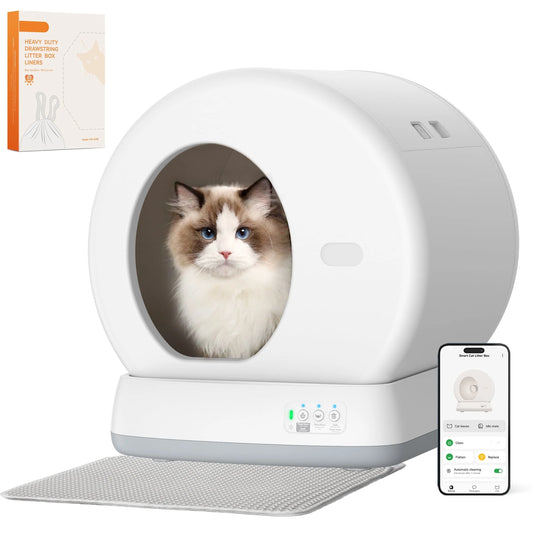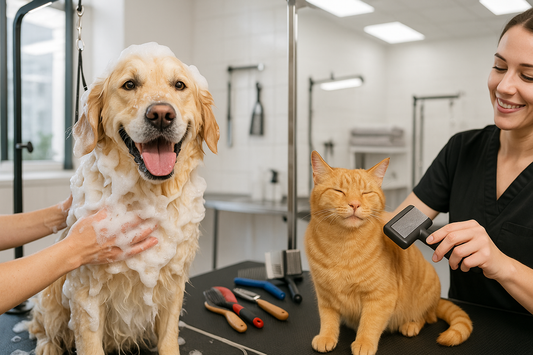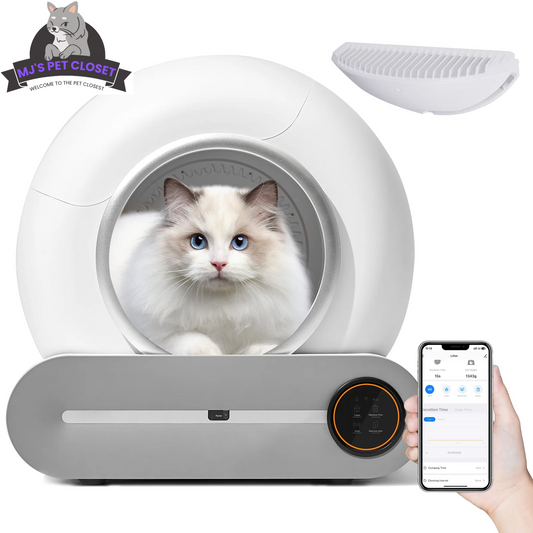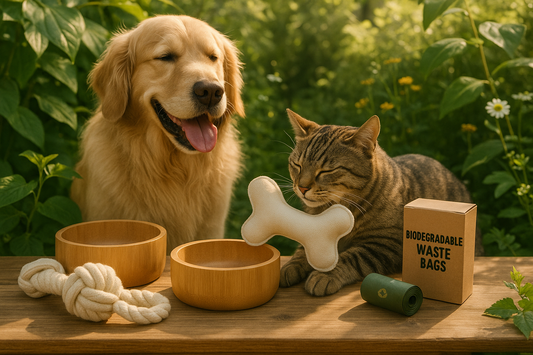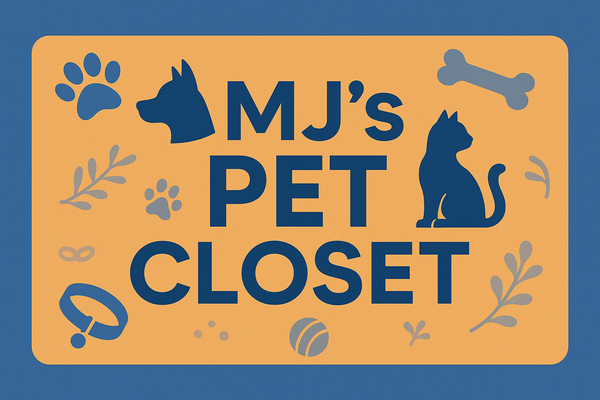Key Takeaways:
- Introduction
- Nutrition and Diet
- Regular Veterinary Checkups
- Exercise and Mental Stimulation
- Grooming and Hygiene
- Socialization and Interaction
- Understanding Behavioral Needs
The Importance of Pet Care
Understanding Pet Care
Welcoming a pet into your home is more than just bringing a cute creature into your life; it is a commitment that requires a comprehensive understanding of pet care. From nutrition to regular vet visits, every aspect of care plays a critical role in ensuring that your furry friends live a long, fulfilling life. When you invest time and effort into your pet's well-being, you're not only contributing to their physical health but also enhancing their emotional happiness.
Happy Pets Are Healthy Pets
Proper pet care directly correlates with pet happiness. When animals are well-fed, groomed, and exercised, they are less prone to behavioral issues and health problems. Regular playtime and mental stimulation are essential components of a vibrant life, preventing boredom and promoting a sense of purpose. Consequently, a happy pet not only enriches your household but also strengthens the bond between you and your beloved companion.
Building a Strong Bond
Caring for your pet isn’t just about fulfilling their basic needs; it is about building trust and fostering a strong relationship. Regular training, affectionate interactions, and understanding their behavior and needs help create a safe and comfortable environment. This mutual understanding enhances the trust between you and your pet, leading to a more harmonious home. A well-cared-for pet responds better to commands and seeks your companionship, reinforcing the loving bond that makes your relationship special.
The Ripple Effect of Good Care
Investing in proper pet care has a ripple effect, extending beyond just your pet's immediate well-being. A happy and healthy pet leads to a flourishing household environment. When your pets are thriving, they often reflect that positivity throughout the home, reducing stress and increasing overall joy for everyone involved. This emphasizes the importance of taking proactive steps in pet health management, establishing a lifestyle that promotes longevity and happiness for your four-legged friends.
Conclusion
Understanding and implementing essential pet care practices are crucial for every pet owner. By prioritizing your pet's needs, you ensure they live not only a longer but also a more joyous life. The bond that forms from thoughtful care not only enhances your pet’s happiness but also enriches your own life in numerous ways. Remember, every effort counts when it comes to maintaining the health and happiness of your beloved pet.
Nutrition and Diet: Essential for Your Pet's Well-Being
To keep your pets happy and healthy, understanding the significance of a balanced diet tailored to their specific needs is paramount. Just as humans require varied nutrients for optimal health, so do our furry companions. A well-thought-out nutrition plan ensures that pets receive the right balance of proteins, fats, carbohydrates, vitamins, and minerals essential for growth, energy, and overall wellness.
Understanding Specific Nutritional Requirements
Different pets have varied dietary needs based on their species, breed, age, and health conditions. For instance, puppies require more calories and proteins than adult dogs, while senior pets may benefit from diets lower in calories but enriched with fiber for better digestion. Consulting a veterinarian for a tailored diet plan can make a significant difference in your pet’s health and longevity.
The Importance of Quality Ingredients
When selecting pet food, prioritize products made with high-quality, natural ingredients. Avoid fillers like corn and wheat that provide little nutritional value. Instead, opt for foods labeled with real meat as the first ingredient, along with whole grains, fruits, and vegetables. These components support better digestion and energy levels, enhancing your pet’s quality of life.
"The foundation of a pet’s health lies in its diet. Quality ingredients lead to healthier pets." – Pet Nutrition Specialist
Feeding Schedules: Creating a Routine
Just as nutrition is vital, so is establishing a consistent feeding schedule. Regular meal times help regulate your pet’s digestion and can prevent issues like obesity. Most adult pets fare well with two meals a day, while puppies may need more frequent feedings due to their higher energy demands. Keeping track of portion sizes and meal times encourages a healthy eating routine that can be easily monitored.
Hydration: An Often-Overlooked Aspect
Never underestimate the importance of hydration in your pet’s diet. Always provide fresh, clean water, as hydration is crucial for every bodily function. Encourage your pets to drink water, especially during hot weather or after exercise, to prevent dehydration and ensure overall vitality.
Home Cooked Meals: A Growing Trend
Some pet owners opt for home-cooked meals as an alternative to commercial pet food. If you choose this route, ensure that your recipes are well-balanced and meet the nutritional guidelines recommended by veterinary professionals. While homemade meals can deepen your bond with your pet, they require careful planning to provide all necessary nutrients effectively.
In summary, providing a balanced diet tailored to your pet's needs, focusing on quality ingredients, establishing a feeding routine, ensuring hydration, and considering home-cooked meals can lead to a happier, healthier life for your furry friend. By prioritizing their nutritional requirements, you not only improve their health but also enhance the quality of the time you spend together.
Regular Veterinary Checkups
Maintaining your pet's health and happiness starts with a commitment to regular veterinary checkups. These visits are essential for monitoring your furry friend’s wellbeing and providing preventive care that can head off serious issues before they arise. Below, we explore the vital components of these checkups, including vaccinations, dental care, and preventive treatments.
The Importance of Vaccinations
Vaccinations play a crucial role in protecting your pets from various diseases. Just as humans receive shots to build immunity, pets benefit from scheduled vaccinations that prepare their immune systems to fend off illnesses. Some commonly given vaccines include:
| Vaccine | Protects Against | Recommended Age |
|---|---|---|
| Rabies | Rabies Virus | 12-16 weeks |
| DHPP | Canine Distemper, Hepatitis, Parvovirus, Parainfluenza | 6-8 weeks, boosters every 3-4 weeks until 16 weeks |
| FVRCP | Feline Viral Rhinotracheitis, Calicivirus, Panleukopenia | 6-8 weeks, boosters every 3-4 weeks until 16 weeks |
Staying current with vaccinations not only safeguards your pet's health but also contributes to the overall public health by preventing outbreaks of contagious diseases.
Dental Care: A Key Component
Many pet owners might be surprised to learn that dental care is an integral part of their pet's overall health. Just like us, pets can suffer from dental diseases that can lead to serious health issues if left untreated. Routine veterinary visits allow the vet to assess your pet’s dental health and recommend appropriate cleaning or treatments.
A healthy mouth contributes to a healthy body, and some of the conditions associated with poor dental hygiene include:
- Periodontal Disease: A common issue that can lead to pain and tooth loss.
- Heart Disease: Bacteria from dental infections can enter the bloodstream and affect the heart.
- Liver and Kidney Issues: Toxins from periodontal disease can impact these vital organs.
Regular veterinary checkups include thorough dental exams, allowing for early detection and treatment of these problems.
Preventive Treatments to Catch Health Issues Early
Routine checkups also encompass preventive treatments such as parasite control for fleas, ticks, and worms. These pests not only cause discomfort but can also lead to significant health complications over time.
During a veterinary visit, your veterinarian will help you establish a preventive care plan tailored to your pet’s specific needs. This can include:
- Flea and Tick Prevention: Essential for outdoor pets, as these can cause serious health problems.
- Heartworm Prevention: A preventable and treatable parasite that can be deadly if not addressed.
- Regular Lab Tests: Blood tests can catch internal issues early, helping to avoid harder-to-treat conditions.
Ultimately, a commitment to regular veterinary checkups can significantly enhance your pet’s quality of life. By embracing these essential care tips, you're not just investing in their health—you're ensuring they lead a long and happy life by your side.
Exercise and Mental Stimulation
Providing your pets with regular physical activity and mental challenges is essential for their overall well-being. Engaging in consistent exercise not only helps maintain their ideal weight but also boosts their mood and enhances their cognitive function. Let’s explore various activities and games that can keep your furry friends both physically active and mentally stimulated.
The Importance of Regular Exercise
Just like humans, pets require regular workouts to stay fit and healthy. Daily exercise helps mitigate behavioral issues stemming from boredom or anxiety while promoting strong muscles and joints. Making exercise a routine part of your pet's life can prove incredibly beneficial.
Consider the following benefits of regular physical activity:
- Weight Management: Prevent obesity by ensuring your pet is active.
- Improved Mood: Exercise releases endorphins, making your pet happier.
- Behavioral Improvement: A tired pet is generally a well-behaved pet.
- Socialization: Group exercise sessions, like dog parks, encourage social skills.
Fun Exercise Ideas for Pets
Finding innovative ways to keep your pets active is crucial. Here are some enjoyable exercises that can fit into your daily routine:
- Leash Walks: Daily walks help burn off energy and provide sensory stimulation.
- Fetch: A classic game that helps with cardiovascular health.
- Agility Training: Set up an obstacle course to challenge their physical and mental skills.
- Swimming: A low-impact option perfect for hot days!
Mental Challenges to Engage Your Pet
Alongside physical exercise, it's important to stimulate your pet's mind. Engaging them in mentally challenging activities can reduce destructive behavior and improve their overall happiness. Here are some creative ways to challenge your furry friends:
- Puzzle Toys: These toys require pets to figure out how to get the treats hidden inside.
- Hide and Seek: Teach your pet to find you—this game is both fun and rewarding!
- Training Sessions: Teach new tricks or commands; this builds a strong bond while stimulating their brain.
- Interactive Games: Use apps designed for pets that provide entertaining challenges.
By incorporating a mix of both exercise and mental challenges into your pet's daily routine, you'll foster a happier, healthier, and more well-rounded companion. Remember, the key is consistency and creativity—keep things fresh, and you'll burn off energy together while strengthening your bond!
Grooming and Hygiene
Grooming is not just about keeping your pet looking good; it plays a crucial role in their health and well-being. Regular grooming routines help to identify potential health problems early on, enhance your pet's comfort, and significantly improve their quality of life. Let’s explore the grooming needs of different types of pets, focusing on essential tasks like brushing, bathing, and nail trimming.
Brushing: A Key to Healthy Fur
Brushing your pet’s coat is essential for two main reasons: it removes loose hair and dirt while also distributing natural oils that maintain the coat's shine. Different pets have varied grooming needs:
| Type of Pet | Recommended Brushing Frequency | Best Tools |
|---|---|---|
| Dogs | 1-3 times a week (daily for long-haired breeds) | Slicker brush, bristle brush |
| Cats | Weekly (daily for long-haired cats) | Boar bristle brush, comb |
| Rabbits | Weekly (more often during shedding season) | Soft bristle brush |
Remember, gentle techniques during brushing will make it a pleasant experience for your pet, reducing anxiety associated with grooming.
Bathing: Keep Them Fresh
Bathing requirements vary widely among pets. Some need regular baths, while others require them only occasionally. Here are some handy tips:
- Dogs: Most dogs should be bathed every 1-3 months depending on their activity level and coat type. Choose a mild pet shampoo suited for their skin type.
- Cats: Generally, cats groom themselves very well, but if your cat has become particularly dirty or has skin issues, a bath may be necessary. Opt for waterless or dry shampoos for best results.
- Small Animals: Pets like hamsters and guinea pigs usually do not require baths. Instead, focus on spot cleaning as needed.
Always ensure that you rinse thoroughly to avoid any residue that can irritate your pet's skin. Following up with a good drying technique is crucial, especially in colder months.
Nail Trimming: A Must for Comfort
Nail care is often overlooked but is vital for your pet's health and comfort. Overgrown nails can lead to painful walking and joint issues. Here’s a trimmed guide:
- Dogs: Ideal trimming frequency is every 3-4 weeks. Look for signs like clicking sounds when your pet walks on hard surfaces.
- Cats: Trimming should also happen every 3-4 weeks. Use cat nail clippers specifically designed to avoid splitting.
- Small Animals: Regular checks are essential, particularly for rabbits and guinea pigs, which may need trimmings every month.
Make sure to reward your pet after each grooming session, which reinforces positive behavior and creates a bonding experience.
The Health Connection: Hygiene and Well-Being
Maintaining proper grooming and hygiene is not just about appearance. Regular grooming contributes to your pet's overall health by:
- Reducing Allergens: Routine brushing can help minimize dander and allergens in your home.
- Preventing Skin Problems: Regular baths and brushing remove dirt and dead hair, decreasing the risk of skin infections.
- Enhancing Comfort: Groomed fur is more comfortable for your pet, preventing matting and tangling that can be irritating or painful.
For a happy and healthy pet, incorporating a structured grooming routine becomes imperative. Regular attention to grooming needs is a simple yet effective way to prevent health issues and strengthen your bond with your pet.
Socialization and Interaction
Ensuring your pet's well-being goes beyond just physical care; socialization is equally crucial for their happiness and health. Introducing your furry friend to various people and animals can be a game-changer in their behavior and temperament. This aspect of pet ownership fosters confidence and reduces anxiety, making them well-adjusted companions.
The Importance of Socialization
Socialization is essential for pets of all ages. Proper exposure to different environments cultivates a sense of security and curiosity in your pet. By allowing them to interact with diverse people and animals, you prepare them for various situations they might encounter in life. A well-socialized pet is generally:
- Less fearful and anxious in new environments.
- More adaptable to changes, such as moving to a new home or meeting new friends.
- Better behaved around guests, leading to more enjoyable interactions.
- Healthier overall due to reduced stress levels.
Effective Socialization Techniques
To effectively socialize your pet, consider the following strategies:
- Start Early: If you have a puppy or kitten, begin their socialization during their critical development period (between 3-14 weeks). For older pets, gradual introduction is key.
- Positive Reinforcement: Use treats and praises to reward your pet during social encounters. This helps them associate new experiences with positive outcomes.
- Variety is Key: Expose your pet to different settings, sounds, and people: parks, busy streets, pet-friendly stores, and events. Each new experience builds confidence.
- Control the Environment: Initially, choose calm and controlled settings for interactions. Gradually increase the level of distraction as your pet becomes more comfortable.
- Playdates: Arrange playdates with other friendly pets. Ensure all introductions are friendly and supervised to encourage positive interactions.
Recognizing Signs of Stress
As you introduce your pet to new experiences, it’s essential to recognize signs of stress or discomfort. Common indicators include:
- Withdrawn behavior or hiding.
- Avoiding eye contact or feeling tense.
- Panting, whining, or excessive barking.
Should you notice any of these signs, do not force the interaction. Instead, take a step back, reassess the situation, and allow your pet to acclimate at their own pace.
In conclusion, the importance of socialization can't be overstated. By actively engaging with your pet through diverse interactions and experiences, you contribute significantly to their happiness and health. A socialized pet not only makes your life more fulfilling but also enriches the lives of those around them. Take the time to invest in your pet’s social skills, and watch them thrive!
Understanding Behavioral Needs
Recognizing and addressing the behavioral signs exhibited by our pets is crucial to enhancing their overall well-being. Just like humans, pets can experience a range of emotions that impact their behavior, and being attuned to these signals can greatly contribute to their happiness. In this section, we’ll explore fundamental aspects of their behavioral needs, while offering practical methods to enhance their emotional health and reduce anxiety.
Identifying Behavioral Signs
Each pet is unique, and their ways of expressing discomfort or anxiety can vary. Understanding these behavioral signs is the first step toward ensuring they are happy and healthy. Common signs to watch for include:
- Excessive barking or meowing can indicate that your pet is stressed or seeking attention.
- Avoidance behaviors such as hiding or cowering, which may suggest fear or anxiety.
- Destructive behavior, like chewing on furniture, often signals boredom or frustration.
Enhancing Emotional Well-Being
To promote emotional well-being, consider implementing a few strategies in your daily care routine:
"A happy pet is a healthy pet." - Pet Care Advocate
- Provide a safe space: Pets thrive in environments where they feel secure. Create a cozy area for them to retreat to.
- Engage in regular playtime: This not only strengthens your bond but also helps burn off excess energy that could lead to negative behaviors.
- Routine and structure: Animals find comfort in familiarity. Establishing a consistent schedule for feeding, walks, and play can minimize anxiety.
Addressing Anxiety in Pets
Anxiety can significantly impact a pet’s quality of life, leading to various behavioral issues. Understanding how to reduce anxiety is essential for their health:
- Gradual desensitization: Slowly exposing pets to what triggers their anxiety, such as loud noises or unfamiliar environments, can help them become accustomed.
- Positive reinforcement: Rewarding pets for calm behavior can encourage them to respond better in stressful situations.
- Calming products: There are numerous products available, from calming sprays to anxiety wraps, that can assist in soothing restless pets.
The Importance of Socialization
Just like humans, pets are social creatures. Proper socialization is vital for their emotional health. Introducing your pet to new people and other animals in a controlled manner helps them develop confidence and reduce fear. Remember to pay attention to their comfort levels and allow them to explore at their own pace, thereby fostering positive experiences.
Conclusion
In summary, providing essential care for your pets is crucial to ensuring their happiness and well-being. From maintaining a balanced diet to ensuring regular exercise and health check-ups, each aspect plays a significant role in building a stronger bond with your furry companions. Remember that a well-cared-for pet is more than just a happy face; they contribute positively to our lives, offering unconditional love and support.
To keep your pet thriving:
- Prioritize nutrition: Invest in high-quality food that meets your pet's unique needs.
- Maintain a regular exercise routine: Engage in daily activities that stimulate both their mind and body.
- Schedule routine veterinary visits: Regular check-ups are key to preventing health issues.
Ultimately, your commitment to effective pet care not only enhances their quality of life but also enriches your relationship. As you reflect on these essential care tips, consider how you can implement them more consistently in your daily routine. Together, let's work towards a healthier future for our pets, because when they are happy and healthy, so are we!
FAQs
What is the purpose of this blog?This blog serves to provide informative content on various topics, helping readers enhance their knowledge and engage with current trends and best practices.
How often is the blog updated?The blog is updated weekly, ensuring that readers have access to the latest information and insights in their areas of interest.
Can I contribute to the blog?Absolutely! We welcome contributions from our readers. Feel free to contact us with your ideas or articles that align with our blog's theme.
How can I subscribe to blog updates?You can subscribe to our updates by entering your email in the subscription form located at the bottom of the homepage. This way, you won’t miss any new posts!
Is there an option to leave comments on the blog?Yes, all our posts have a comment section. We encourage readers to share their thoughts, ask questions, and engage with other readers and authors.
What topics does the blog cover?The blog covers a wide range of topics, including technology, lifestyle, health, and personal development, among others. This variety ensures something for everyone.
Are the blog posts searchable?Yes, all posts are optimized for search engines, making it easy for readers to find content by using relevant keywords or topics in the search bar on our site.
Can I share blog posts on social media?We encourage sharing! Each post has social media buttons to make it easy to share your favorite articles with your network.
